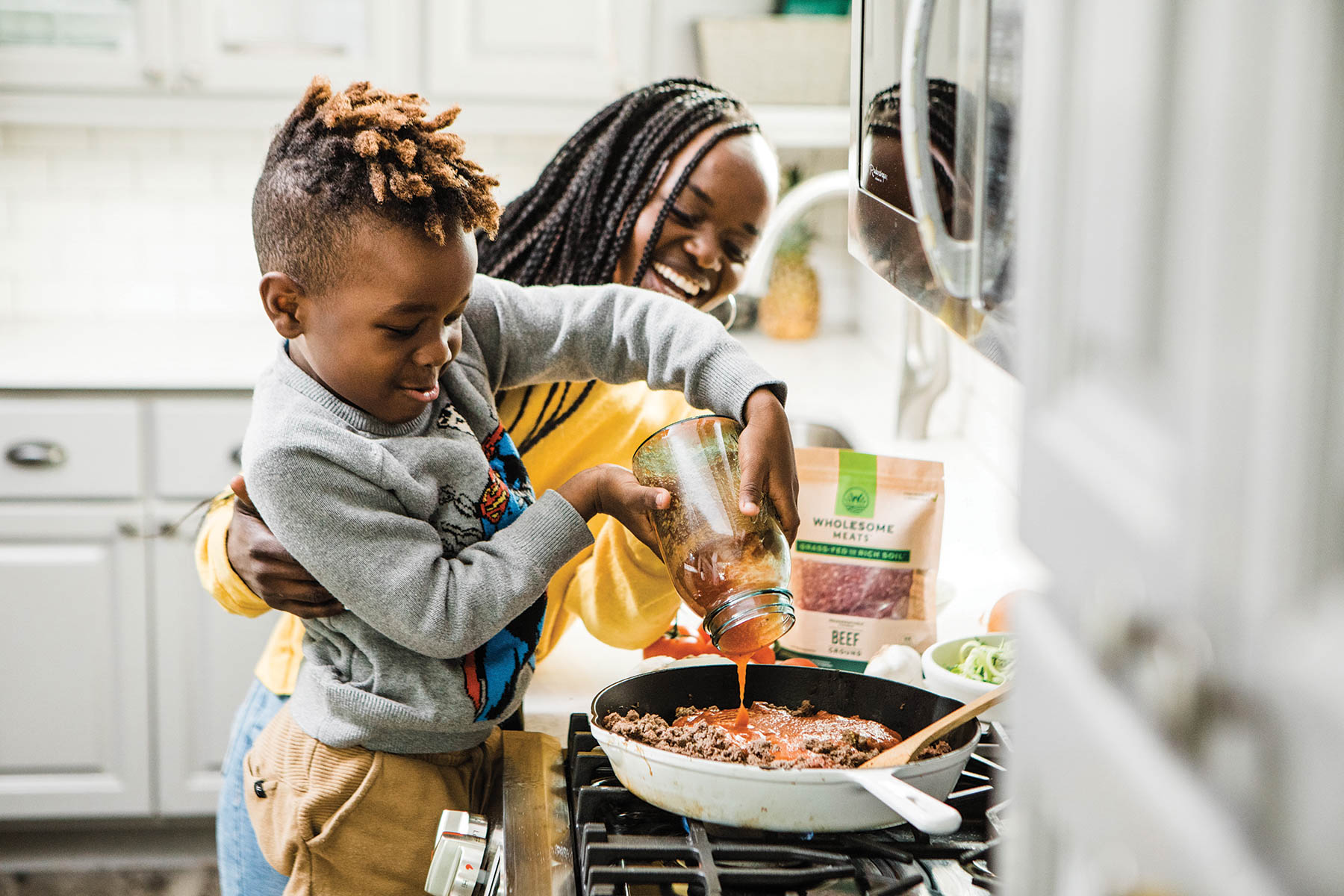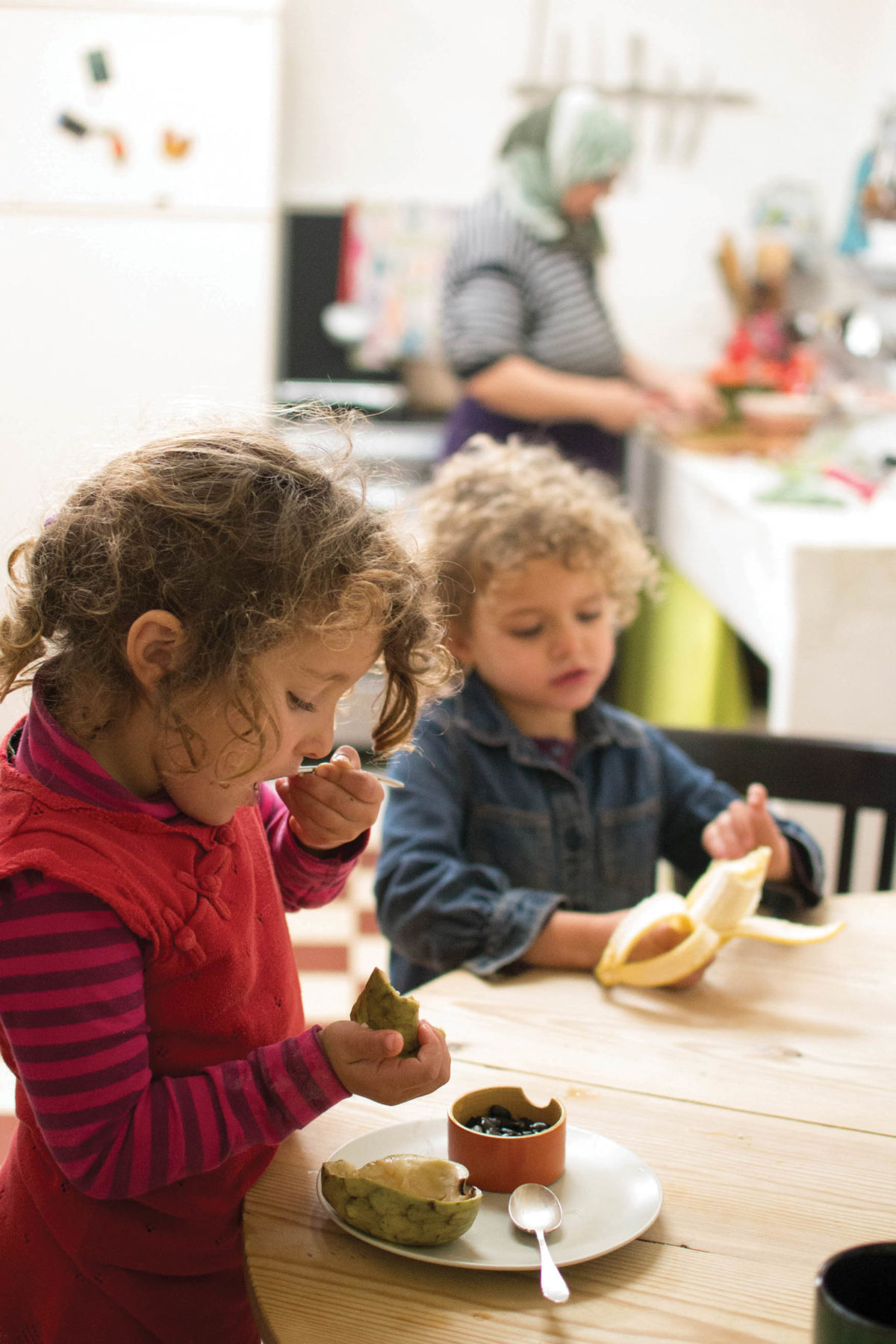Food Advice for Parents

Nutrition: It can seem simple, yet complicated, no matter your age. Throw in a hungry baby, picky toddler or growing teenager and things can seem even trickier for parents. But finding that balance for the whole family doesn’t have to be so complicated. Michel “Mitsy” Veloz, registered dietitian at Dell Children’s Medical Center, says it’s all about getting your child involved.
“Being hands on is key,” Veloz explained. “As you make your grocery list and go shopping, invite your child to be an active part of the process in an age-appropriate way. Plan some extra time at the grocery store or farmers market to allow your child to help select the items you need.”
Once you are home and ready to get cooking, make it a team effort. Kourtney Curry, a mother of two, ages six and eight, finds her kids are more likely to eat what’s for dinner if they are involved in the preparation process. Children thrive off of this structure.

Veloz emphasized children need to be eating three, well-balanced meals every three to four hours. Ignore the food trends and fad diets. They are what they claim to be: short-term crazes.
“Make sure your plate looks happy,” Veloz says. “A happy plate is one that has lots of color.”
Another tip, if your child refuses to eat vegetables, it might be worth a shot to bring them to a garden. Veloz says that, for her, taking patients to the garden at Dell Children’s and letting them pick the food fresh often stimulates and excites them about the food in a whole new way.
Some parents even simplify life more by only preparing one meal for dinner. NICU nurse and mom Brittany Carillo makes it a point to feed her eight-month-old daughter just about everything she and her husband eat. This method that Brittany and husband Jordan have chosen to feed baby Haisley is known as “baby-led weaning.”
According to one study done by the University of Otago, this method of baby-led weaning (BW) is defined as introducing foods to infants where they are feeding themselves hand-held foods instead of being spoon-fed by an adult. The BW infant also shares family food and mealtimes and is offered milk (ideally breast milk) on demand until they self-wean.
Brittany says she is pleased with how the baby-led weaning process has been for her daughter. Haisley was fed puree food from four and a half to six months. Since then, she has moved to baby-led weaning. The child is able to enjoy family meals alongside her parents by eating foods cut into long strips which are easy for her to hold while her motor skills are developing. And so far, Brittany says, Haisley is a great eater.
Baby-led weaning is a great way to expose infants to foods in an attempt to avoid developing picky eating habits. Who says baby food has to be mushy and bland?
For parents of older children, it’s very important to discuss balance. Desserts and soda can be enjoyed but it is important to balance the dessert with good sources of protein and nutrients in the meal.
Food label literacy is very important, too. Take a look at the labels on the things you drink. Oftentimes, these drinks are full of sugars and carbs. Veloz suggests enjoying soda in small quantities after a meal so the stomach is not being filled with unfulfilling sugary liquid throughout the meal itself.

As the holidays approach, many families will find themselves in social settings with foods that might be unfamiliar to children. Make the unfamiliar familiar by including your child in the proration process. Veloz encourages parents to let tiny hands have jobs to make them feel they are contributing to the meal.
Engage in conversation with your child about what dishes will be present at the dinner table. If these recipes are family traditions, tell the stories behind them. In her experience, Veloz has found children love to learn about these things which make them feel included and secure.
Once at the holiday gathering, ditch the screens, invite your child to participate in mealtime conversation. Not only does this foster social skills, it also allows the child to observe good eating habits by the adults around them.
Nutrition is a journey. Lifestyle, food preferences and dietary needs will change throughout one’s lifespan, and that’s okay. As families experience these changes it is important to learn from credible resources backed by science.
If you are ever unsure or would like to learn more about the ways you can encourage your child to make healthy food choices, seek professionals like Michele Veloz, as there are many resources that are ready to help your family succeed.






